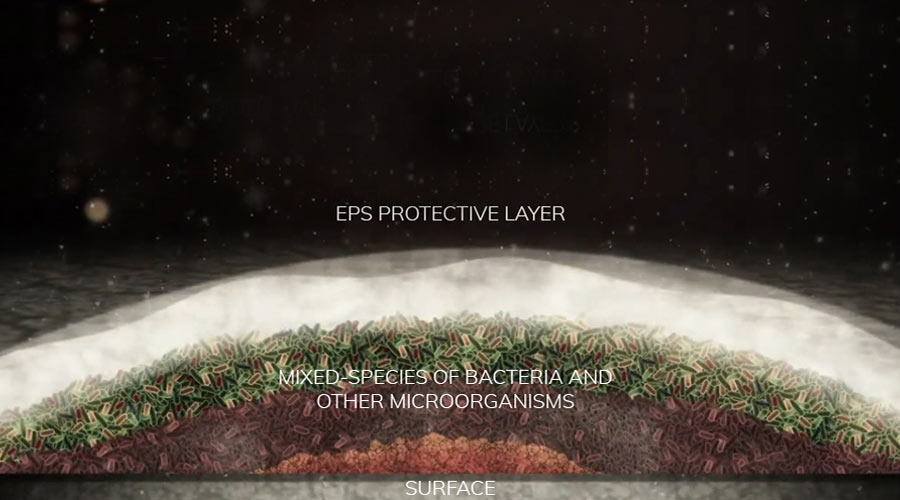This article explores the use of enzymes and other modern, eco-compatible technologies to combat Listeria monocytogenes (LM) biofilms in the food industry.
Listeria monocytogenes (LM) remains a public health concern and an ongoing challenge for food industry operators.
LM’s persistence is primarily due to its ability to form biofilms in food processing environments.
Traditional cleaning and disinfection methods, based on chemical biocides, can lead to the development of microbial tolerance and resistance.
In recent years, new environmentally friendly technologies have been proposed as alternatives to chemical disinfectants, owing to their reduced environmental impact and antimicrobial activity. Among these, enzyme-based approaches are the most promising, with fewer side effects.
Enzymes act on the biofilm matrix, quorum sensing, cell adhesion, and microbial growth.
They are effective in detaching biofilm-associated cells. Several studies have demonstrated that combinations of enzymatic detergents can reduce LM cell counts by 4.15 to 6.39 log CFU/cm².
The use of multi-enzymatic and targeted formulations provides broader and more effective action on various types of extracellular matrices compared to products based on a single enzyme class or less specific formulations.
The patented, specific enzymes contained in BIOREM® represent an effective and already widely applied strategy across different sectors of the food industry. They offer a simple yet powerful solution for controlling Listeria monocytogenes (LM) biofilms, with multiple benefits.
Biofilm of Listeria monocytogenes (LM) in the food industry
Key Advantages of Enzyme-Based Treatments:
Action on the Biofilm Matrix
Enzymes are capable of degrading the extracellular matrix of the biofilm, a key component that ensures bacterial protection and persistence. This degradation facilitates biofilm removal and increases bacterial susceptibility to other treatments.
Interference with Quorum Sensing
Enzymes can interfere with quorum sensing systems, intercellular communication mechanisms that regulate biofilm formation and development.
Action on Cell Adhesins
Enzymes can act on bacterial adhesins, thereby reducing the ability of the cells to adhere to surfaces and form new biofilms.
Growth Inhibition
Some enzymes directly inhibit the activity of other enzymes involved in microbial growth, thereby reducing proliferation.
Enhanced Penetration of Cleaning Agents
By breaking down the biofilm matrix, enzymes facilitate the penetration of conventional detergents and disinfectants, improving the overall efficacy of cleaning procedures.
Activity at Various Temperatures
Enzymes are effective at both low (20°C) and high (50°C) temperatures, allowing for flexible application under different processing conditions.
Synergistic Potential with Other Treatments
Enzymes can be combined with other antimicrobial agents, such as chlorine- or peracetic acid-based detergents, to enhance biofilm removal efficacy.
Specificity of Action
Certain enzymes have demonstrated specific antibiofilm activity, reducing cellular hydrophobicity, auto-aggregation, exopolysaccharide (EPS) production, and the metabolic activity of LM.
Alternatives to Chemical Disinfectants
Enzymes offer a more eco-friendly alternative to traditional chemical disinfectants, which may pose risks to human health and the environment.
Reduced Resistance Development
Using enzymes may reduce the risk of bacteria developing resistance, a concern associated with repeated use of chemical biocides.
In conclusion, enzymes represents an effective strategy for controlling LM biofilms due to their multifaceted action on biofilm components and their ability to enhance cleaning treatment efficacy.
Their specificity, temperature range, and synergistic potential with other treatments make them particularly attractive for the food industry.
Piramide’s technical experts are available to assist in solving contamination issues using BIOREM® treatments and to present the BIOFILM FREE PROGRAM, designed to prevent biofilm formation.
If you found the article on Listeria monocytogenes (LM) interesting, we invite you to read:



